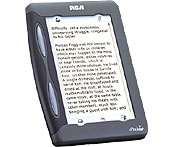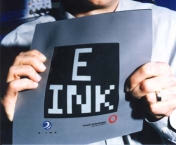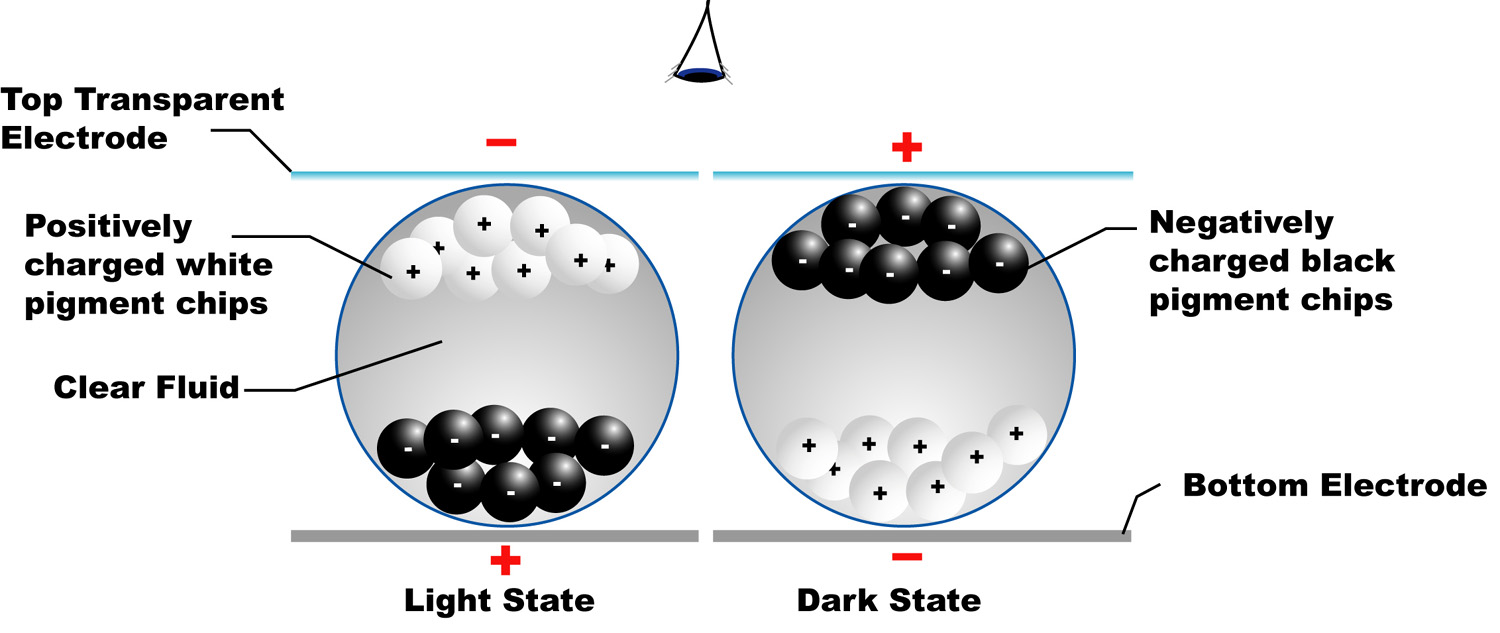 RCA REB1100 ebook reader
RCA REB1100 ebook reader "Can I carry your books?"
Algot Runeman, Technology Coordinator
King Philip Regional School District, Wrentham, MA
What will a textbook look like in September of 2010? The age of electronic "paper" is dawning. Could paperless textbooks happen even sooner?
First, a little background
Only a few years ago, Neil Stephenson wrote a science fiction novel called The Diamond Age, which featured an amazing electronic book. The Diamond Age was the winner of the 1996 Hugo Award for Best Science Fiction Novel. It is worth reading. Stephenson's electronic book was a stretch of reality for the mid 1990's when the novel was published. Science fiction's hallmark is stretching reality, but actually, portable electronic text displays have been around for quite a while. Some of us used the Radio Shack Model 100 with its few lines of text, sort of like today's DreamWriters that are popular and not too expensive. They make a nice substitute for a laptop computer when writing is the goal. The grayish-black text on a grayish-white screen is hard to read in sunlight, though.
When reading is the goal, there are the Rocket E-book (now by RCA) and handhelds like the Palm and Handspring Personal Digital Assistants (PDAs). They all display text on a small screen that usually has small letters. I've tried several of them for reading, and the devices aren't really reader-friendly. While they do offer easy "page" turning with just the tap of a button, the units aren't easy to hold in the way a book is.
 RCA REB1100 ebook reader
RCA REB1100 ebook reader
Even software giants Adobe and Microsoft have gotten into the ebook business with reader software that let you display books on your laptop. The laptop screen is big and bright, but, unless my laptop is actually off my lap, it isn't comfortable for me. Anyway, I like to hold my book a little closer when I read. I'll admit it publicly; I'm nearsighted. I want my ebook light, and, if possible, flexible like a magazine or paperback.
Flexible Transistors: Sidetracking Silicon
Laptops and today's coveted flat desktop displays share a common component, silicon transistors which are built the way glass is made by melting and cooling sand grains. In the January 2001 issue of Technology Review from MIT, there was an article about an IBM scientist who had invented a practical method to make a flexible transistor. When I read that article, I was intrigued. Now as January 2002 approaches, I am excited.
E Ink and flexible electronic "paper."
E Ink of Woburn, Massachusetts could be the first producer of electronic "paper" which some manufacturer will soon build into an ebook I'll enjoy. The company's Web pages show demonstration units by Phillips Electronics, IBM and Lucent Technologies, among others.
The "paper" material looks more like it is a plastic of some sort, but the key to the product isn't the substrate. It is the flexible transistors and the reportedly inexpensive manufacturing process that are the big deal. The transistors can be "poured" onto the base material, and once created, the image stays unchanged without an electric refresh until the image needs to be changed. That could mean a real savings of battery power. Besides being inflexible, today's laptop and PDA screens require a refresh signal several times a second to keep their image. My laptop only runs for a couple of hours unless I plug it in to recharge the battery. The screen and the battery are still heavy, too, in spite of the efforts to reduce a laptop's weight.

Lucent Technologies Demo of E Ink

How E Ink works
A company press release puts it this way:
"E Ink's electronic ink displays help unleash the full power of our connected world by uniquely combining a paper-like reading experience with the ability to access information anytime, anywhere. E Ink's technology delivers the look, form and utility of paper encompassing broad design freedom, manufacturing flexibility, and the ultimate in readability and portability."
I imagine a magazine-sized reader made with electronic ink, and if the first product is only in black and white, that's okay with me. Black letters on a white background is what I expect to read on paper, now. Novels and newspapers have been happily accepted in black and white for years. I bet color versions of electronic ink transistors won't take long to develop, either.
Besides the electronic novels, newspapers, textbooks, workbooks and worksheets that students will be able to download at home or from the school LAN by some wireless connection, I imagine a real computer will be available, too, with a membrane keyboard something like the one on my Timex Sinclair 1000 back in the 1980s. It could even have touch-screen capabilities. CompactFlash memory like the little cards in a digital camera already allows removable, non-volatile storage. The technologies are all coming together.
Science fiction? That's yesterday's news. E Ink is here. I can't wait to get some, and I certainly won't miss the backpacks in the hallways.
"Can I carry your book(s)?"
| References RCA REB1100 image: http://www.rca.com/product/viewdetail/0,2588,PI45798-CI700093,00.html? By the way, if you aren't already aware of it, check out Project Gutenberg, a source of thousands of out-of-copyright texts available for free download. http://www.gutenberg.org |
December 8, 2001